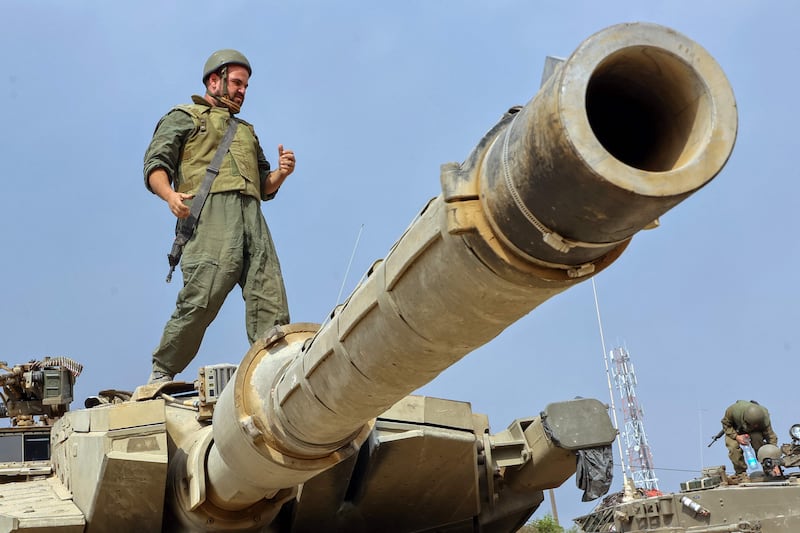Live updates: Follow the latest news on Israel-Gaza
Israeli specialist weapons teams preparing for a Gaza offensive have undergone a significant overhaul since the last campaign to bring new technical equipment and combat skills to operate against the formidable fighting tactics used by Hamas.
Analysts have disclosed that Israel has developed a number of secret techniques for urban warfare fighting, including the secretive “Ghost Battalion” that has a range of capabilities and the firepower of an armed brigade.
Experts believe the Israeli ability to fight in cities has been enhanced by the Trophy protective systems fitted to its armoured vehicles that can shoot down multiple attacks from RPGs and anti-tank missiles.
It also has a formidable array of weaponry from drones, to precision guided bombs, heavy artillery and effective Merkava tanks, some of which are equipped with mortars to fire upwards against tower blocks.
But it will also be up against Hamas’ well-prepared defences that will likely include Iranian supplied anti-tank guided missiles (ATGM), suicide drones, vast numbers of IEDs (Improvised Explosive Devices) and a huge network of tunnels.
But senior former military commanders have also warned that a ground operation that is punitive with very high civilian casualties would result in a loss of international support and region-wide escalation.
“You have to ask what is Hamas’s objective?” retired Lt Gen Richard Barrons told The National. “Was it to stir up relationships between Israel and its neighbours and deny the growing rapprochement with Arab states with the strategic outcome of setting the Middle East on fire.”
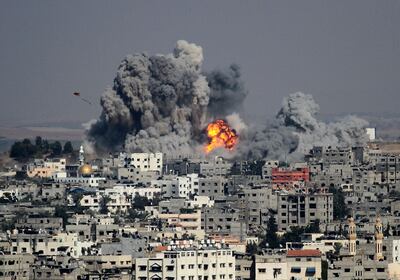
Trophy protection
Israel’s military is well aware of the dangers that invading Gaza presents following its short incursions there in 2014 and 2009. The army is also the foremost trained in the world for urban combat with 80 per cent of its exercises focused on fighting in a built-up area, mainly in a large mock-up Palestinian town specially built in the Negev desert.
More than 1,000 of its Merkava main battle tanks and Namer armoured personnel carriers are fitted with the Trophy active protection system that fire explosive projectiles to hit missiles before they strike the armour.
“Trophy has proven very effective even against multiple RPG strikes and even if something gets through the Merkava has good protection,” said Sam Cranny-Evans of the Rusi think tank.
The system also has the advantage of precisely detecting enemy firing points and passing their positions back to the tank crew and their combat formation.
That will prove important for Israeli tank commanders who for situational awareness open their hatches to spot targets, a tactic that in the past has proven costly.
This will become more dangerous if, as expected, Hamas has copied the Ukraine tactics of using drones to drop grenades into open tank hatches.
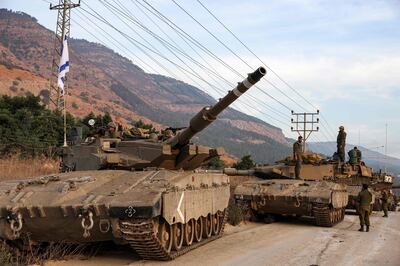
Urban secrets
But the drone tactic may well be negated by Israel’s electronic warfare (EW) capabilities which should be able to provide a shield over its forward formations.
While Russia’s EW systems have been highly effective in Ukraine they have also been vulnerable to targeting from HIMARS precision missiles, a weapon that Israel is unlikely to face.
But EW will form just one part of the Israeli offensive tactics that appear to have evolved significantly in the last decade.
A new tactic appears to have been used during an assault on the occupied West Bank town of Jenin in July by about 2,000 Israeli troops operating without armoured vehicles. Instead they used massed surveillance from drones alongside other intelligence gathering that resulted in the deaths of 12 Hamas or other extremists and two Israeli fatalities during the two-day operation.
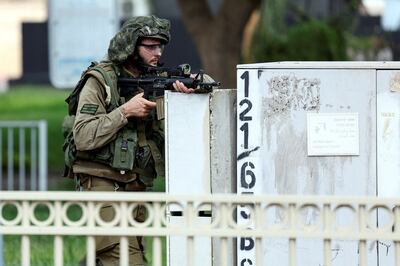
Ghost operations
It is also possible that the Jenin operation involved members of the new Ghost Battalion is a highly secretive reconnaissance and strike unit.
Uniquely, it comprises infantry, special forces, tanks, armoured vehicles, cyber specialists and electronic warfare teams. In addition, it has its own artillery and missile battery and, something not seen in western armies, its own squadron of F-16 fighters on hand for rapid response air strikes.
“Ghost was deployed in 2021 and it has multi-domain capabilities allowing it find and strike targets using everything from the eyeball to the latest electronic eavesdropping,” said Mr Cranny-Evans.
However, the unit did suffer a significant setback when its commanding officer, Colonel Roi Levy, was among the estimated 1,000 Israelis killed on 7 October.
“Israeli defence forces go to great efforts to hide their new capabilities until they actually need to use them so there will probably be surprises to both sides,” said retired Brig Ben Barry of the IISS think tank.

Hamas skills
The October 7 attacks clearly demonstrated Hamas has excellent intelligence-gathering and offensive capabilities, although it has now lost 1,500 of its most motivated fighters.
Given its access to Iranian equipment, it is highly likely that the group has anti-tank missiles that could immobilise Israeli armour despite Trophy.
Hamas fighters will use these in sophisticated ambushes in Gaza’s streets combined with IEDs, either buried in the road or at the side if they have been supplied with Iranian-made EFP (Explosive Formed Projectiles) that fire molten metal and proved effective against coalition forces during the Iraq occupation.
If it chooses to fight – rather than melt away – then Hamas will likely adapt its 2014 tactic of heavily armed squads, sometimes dressed in Israeli uniforms, to launch surprise strikes.
It is also understood that Hamas has developed its own urban training centre at a disused airbase in southern Gaza.
In a study of the 2014 conflict, the Rand Corporation think tank reported that the resistance was “skilful, adaptive and conducted coherently,” with fighters “willing to engage in close combat with Israeli forces”.
Brig Barry also suggested that Hamas might have used only 10 per cent of its rockets, meaning that it might have another 25,000 in reserve.
These numbers could potentially overwhelm Israel’s Iron Dome missile defence and cause civilian casualties alongside a significant economic impact, he added.
“Hamas have also built hundreds of kilometres of tunnels, they will have laid all sorts of landmines and IEDs, they know the terrain extremely well and will have rehearsed their tactics,” Brig Barry added.
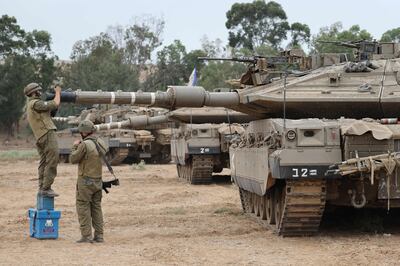
Invasion force
Israel is likely to deploy two armoured divisions, numbering about 60,000 soldiers and an airborne division of about 20,000 troops, to invade Gaza.
The likely plan is to thrust a number of armoured brigades through the centre of Gaza, close to Deir Al Balah, pushing to the coast with the objective of cutting the territory in half.
At the same time, other brigades will push into the south and to the north around Gaza city. With the territory sealed off, the Israelis will then push into the cities, finding Hamas’ tunnels and strong points taking them out block but block.
But it will be a long and highly dangerous operation that would need weeks to organise, said Lt Gen Barrons.
“The worst thing to do will be to send in a military force in and for them to be cut off and become exhausted,” he said.
“There is also a very realistic danger that what Israel does is seen as punitive rather than proportional. That will have consequences as it was probably Hamas’s objective to provoke a disproportionate response that will inflame the Middle East.”
